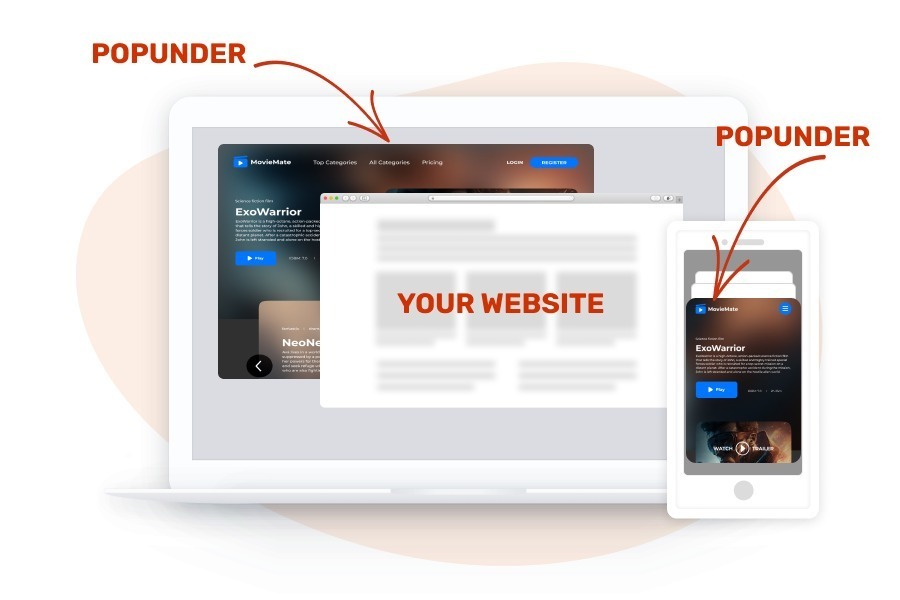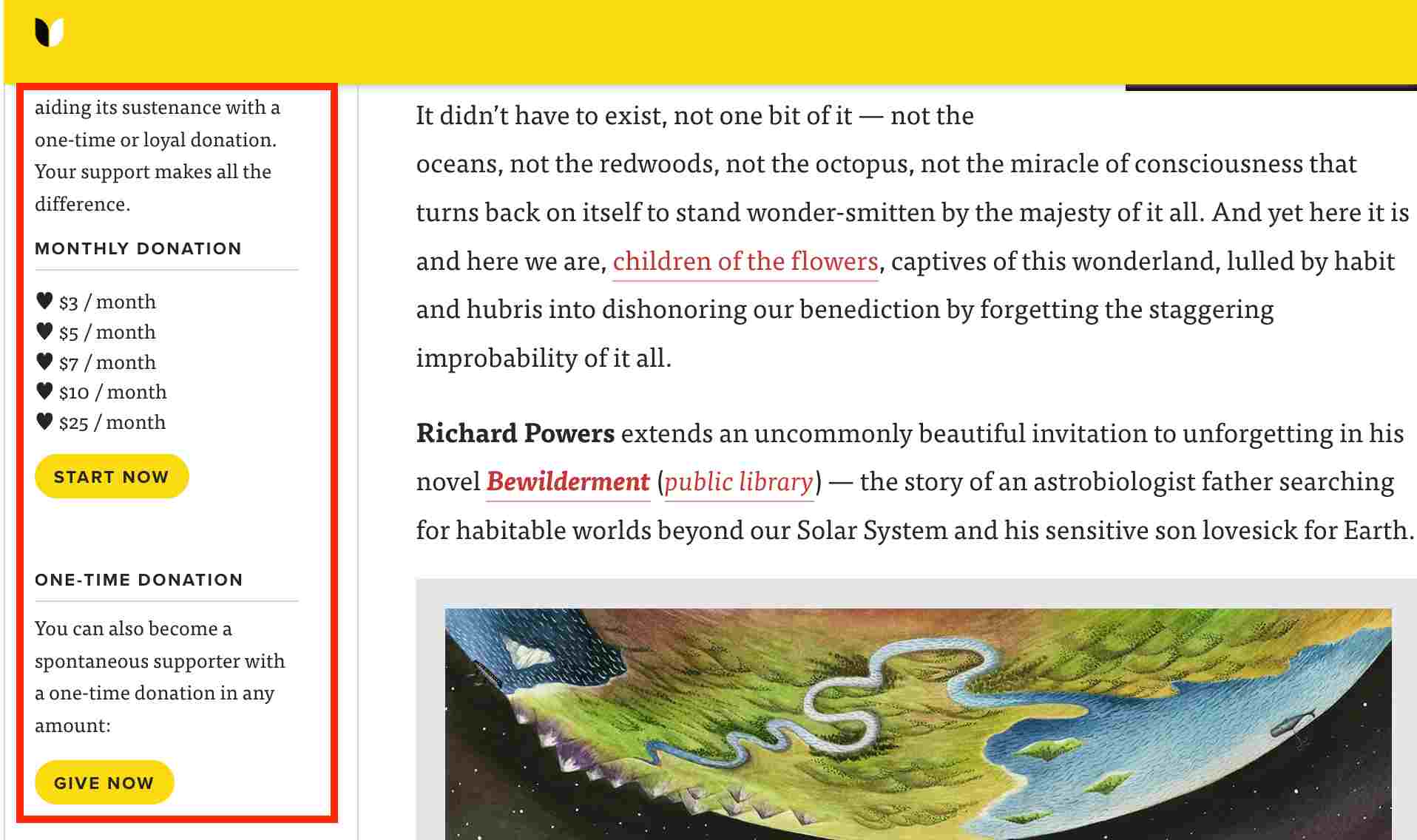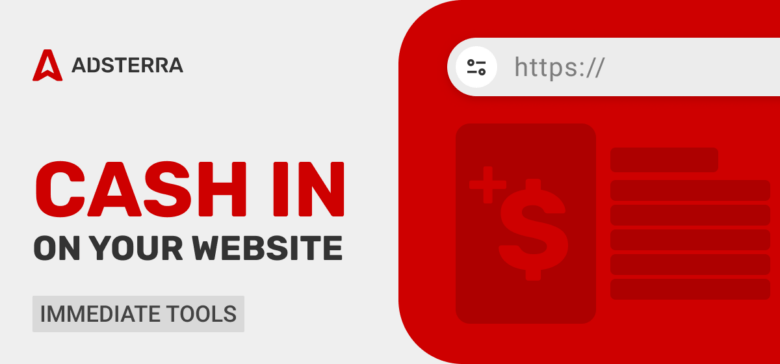When looking for ways to monetize your website traffic, the primary thing you need is a definitive yet practical guide to help you generate revenue. This article will show you the best ways of how to monetize a website and earn some cash regardless of your level of traffic (also check our article about Profitable Website Ideas in 2025). Some ways can reap instant rewards, while some demand a little patience, but nonetheless are all important to know.
What is website monetization?
Website monetization is the process of generating income from a website by leveraging its content, online traffic, and target audience. It may become one’s passive income or the main way of earning a living.
Making money online through website monetization is typically done by integrating income-generating strategies, such as affiliate marketing, sponsored content, membership sites, selling digital products, subscription models, advertising through display ads or Smartlinks, online stores, online courses, etc. With some time and effort, website monetization turns your traffic and content into a source of income.
Preparing your website for monetization
To get your website ready for monetization involves optimizing your site to adhere to the requirements of ad networks, affiliate programs, as well as to accommodate other revenue methods.
Table 1. Website Monetization Check-List Table
| Step | Goal | Actions to Take | Why It Matters |
| 1. Choose a Profitable Niche | Faster monetization | • Pick high-demand topics • Align with your passion/expertise | A clear niche helps attract a specific and loyal audience, makes monetization easier |
| 2. Create High-Quality, Original Content | Trust and traffic | • Create well-researched articles/helpful videos • Use keywords for visibility on search engines | Unique content ranks better in search engines, engages users |
| 3. Build Consistent Traffic | Steady flow of viewers | • Harness SEO strategies • Promote via ads, social media, email marketing | Steady traffic is key for monetization eligibility and scalable revenue |
| 4. Make Your Site User-Friendly | Better UX and retention | • Fast-loading pages • Mobile-first approach • Clean layout • Intuitive navigation | Positive UX leads to longer sessions/higher conversions |
| 5. Set Up Legal and Trust Dedicated Pages | Transparency and compliance | • Create Privacy Policy, Terms & Conditions • Disclose affiliate relationships where required | Required by affiliate programs and building visitor trust |
| 6. Install Tracking Tools | Measured performance | • Add Google Analytics to measure traffic and behavior • Use Google Search Console for SEO | To refine content and marketing strategies |
| 7. Choose Monetization Methods | Traffic into revenue | • Use ads, Smartlinks, affiliate links, sponsored posts, etc. | To diversify income streams |
| 8. Meet Monetization Requirements | Qualify for monetization | • Maintain a self-hosted domain • Have 20–30 high-quality posts • Reach required monthly traffic (10K–50K views) | Eligibility for collaboration and affiliate approvals (Note: Adsterra has flexible monetization and quick moderation requirements) |
10 Ways to monetize your website
Now let’s dive in into the most effective and widely spread ways to monetize a website. Employ one or a few approaches that can potentially give you lucrative revenue streams.
1. Affiliate marketing
Affiliate marketing is an arrangement where you earn commissions by promoting a product or service by another person or company with affiliate links. You’ll insert their link in your website and get a commission when people click on it and pay for the product. Many online retailers have affiliate programs. Amazon Associates is one of the most popular ones.

Challenges for affiliate marketers include:
- It’s time-consuming.
- You need to be good at writing to create effective advertising copy.
- The product you’re advertising must be relevant to your audience.
- The competition for the same offers may be harsh.
2. Coupons with affiliate links
This method is another type of affiliate marketing that involves offering coupons from retail partners on your website. You can post coupons from affiliate networks you have signed up on or contact retailers within your vicinity for deals that you can promote. Most customers look for discounts when they shop, so there’s money to be earned by giving them that.
You can also create your own website dedicated to offering coupons for specific items and use this monetization method as your primary one.
3. Selling ad space directly to advertisers
You can sell free space on your website to businesses that want to place their advertisements on it. Selling ad space is often time-consuming because you’ll need to pitch to the advertisers and convince them that ad space on your website is worth purchasing. However, it maximizes the income you can make from your site.
The ad space could be Banner at the top or side of your website, Popup, or a link at the bottom of the page. You’ll need to formulate a pricing structure and convince advertisers that it’s worth it to pay your desired amount. Alternatively, you can place Adsterra’s Direct link (Smartlink) on the page of your site to earn money, Popunders, or Social Bar.

How do you let businesses know that ad space on your blog is up for sale?
- Create a media kit, which is a summary of your website and its visitors’ statistics.
- Send it to potential advertisers and pitch it to them.
- Field requests from intending advertisers and negotiate a payment structure.
Adsterra supports different types of ad formats for both desktop and mobile devices, including Native Banners, Popunders, and In-Page Push. The platform can deliver a 100% fill rate for advertisement sections on your website.
4. Monetize the website with ad networks
An ad network acts as a mediator between publishers and advertisers. As a publisher, you can sign up on the ad network, add their code, and have ads from the network’s inventory automatically show up on your website. These platforms eliminate the need to negotiate advertisement deals directly and take a percentage of your revenue for their service.
Adsterra is an example of an ad network that helps 36,000+ website owners and bloggers grow ad revenues. The moneymaking principle is quite straightforward: you put ad codes of the preferable format on web pages, and when users watch ads, click on them and convert, you get paid. These may be on-page ads like Banners or In-Page Push, or ads that will appear outside your website in a separate browser tab (aka Popunders).

5. Donation-based monetization
You can politely ask for donations from your visitors if your quality content offers much value to them. Accepting donations from a few loyal ones can fully sustain your website and earn you some extra income.
You can insert donation buttons on your website that visitors can click on and contribute directly. Many payment processors let you embed these buttons and accept donations easily, e.g., PayPal and Stripe.

6. Create and sell physical or digital products
You can create products related to your website and sell them online to earn income. For example, if you run a blog about makeup and cosmetics, you can create your own makeup products and sell them to your readers. Glossier is a successful example of a makeup brand that started from a blog known as Into The Gloss.
Creating an online store is more challenging than creating a simple website, but it’s doable. The good thing is that e-commerce platforms like Wix, WooCommerce , Shopify give you a ready-made solution.
7. Flipping your website
The flip-websites monetization model is quite different from the other ones. It involves selling your existing website to a company or individual interested in growing it and adding more forms of monetization to earn income.
Many factors, including traffic, revenue, and growth metrics, affect how much money your website can fetch. You can browse through Empire Flippers to get an idea of how much websites can be sold for.
Adsterra lets you install ad codes on your website in a few easy steps to start making money at once. Get your site approved in minutes and access 15,000+ reliable advertisers.
8. Start a paid membership website
Another smart way to monetize your website is by charging readers for access to specific content. These readers will be premium members and benefit from exclusive content.
Mostly common for news websites and blogs, where paid members have access to exclusive, often long-form content. Members can pay monthly or annually or pay for unique content like videos, audio, and training programs. If you have a WordPress site, you can easily add a membership plugin to set up this monetization system.
9. Sponsored posts
Sponsored content is a collaboration between you and a brand you want to promote. You can write paid content articles that promote a brand through reviews, announcements, listicles, etc., and charge money for your service. Sometimes, the brands write the articles and hand them over for you to post.

Before implementing this monetization model, you should think of:
- How much influence your website commands.
- How much time you need to create the sponsored content.
- The number of sponsored posts you’ll create each month.
These factors are what determine how much you can charge for sponsored posts. The higher your traffic and influence, the more money you can charge. For example, the popular listicles site BuzzFeed can charge $100k+ for a sponsored post.
10. Build an email list
An email list is a valuable tool for every website owner. You can insert a form in your website to collect email addresses for your list. Once you build a large email list, you can make money by including sponsored content, affiliate links, or display advertising in your emails.
Top monetization strategies to consider
Here are three monetization strategies that you can use as online tools to boost your passive income.
1. Monetize a website with Adsterra Direct Link
Adsterra Smartlink, also called Direct Link, lets you monetize traffic in the easiest way. You can place it anywhere suitable. It is simply a URL that takes your followers to a page containing high-paying ads.
You can register with Adsterra on the fly, see how it works, and copy and paste Direct Link from your account. Obtain expert advice in the live chat from the Partner Care support team when needed.
2. How to monetize traffic and website with Popunder Ads?
Popunder is another way to monetize your traffic. Popunders pop up in the full screen behind the browser window that a user interacts with. Their main advantage is that it’s non-intrusive and less invasive than Popup Ads, as viewers are not interrupted by the ad until after closing what they are interacting with on the page.
3. Monetize with Adsterra Social Bar
Social Bar is a special format from Adsterra that uses In-Page Push notifications, Icon Notifications, Interstitials, or Custom Widgets on a webpage. Ads appear in turns, without creating visual clutter, making your site visitors feel interested in various designs and elements.
More steps on how to monetize site for revenue
With A/B testing, you can test different ads on your website to determine which ones deliver the best results. There are some proven ones to start with as they greatly affect how much you can earn.
1. Ad format
As a publisher, you should test different advertising formats on your website and see which ones your audience responds to most. For example, people often get repelled by too many banners or Popup ads. Check to see if your audience falls into this category and take their feedback to figure out what type of ads they’re more comfortable with.
2. Ad placement position
You can place ads on different parts of your website (your page’s top, bottom, or side) and see which delivers the most of all impressions and clicks. It can also be Popup or Banner at the very top of your website.
Horizontal ads at the top or bottom of your webpage deliver the best results on mobile, while vertical ads on the left or right side of the screen deliver the best results on the desktop. But it could vary for your website, highlighting the importance of A/B testing.
3. Image size
The images shouldn’t be too big that they overshadows your site’s content or too small that your readers can hardly see them. For instance, anchor ads that stay afloat as the reader scrolls through your screen should not occupy more than 25% of the screen. Anything above that will be inconvenient to your users. Similar rules apply to other ad formats.
4. Density
Ad density is a metric determined by summing the heights of all the advertisements within a webpage and dividing it by the total height of the page. It is expressed as a percentage. The rule of thumb is that your ad density should be no more than 30%. For example, if your webpage’s total height is 1000px, the total height of the ads should be no more than 300px.
You should test different ad densities within 0 to 30% to determine which ones deliver the best engagement and stick to that one.
5. Ad network
Some ad networks offer higher payouts and more stable CPM with a % 100 fill rate, and some are best suited for some categories of websites over others. You can test different advertising networks but only use one at a time to avoid conflicting ads.
Every publisher is free to choose which ad network best fits their monetization goals. With Adsterra, you can set up easily and get approved as quick as in 10 minutes. The platform works with over 15,000 advertisers. It supports different types of high-paying ad formats and has Anti-AdBlock feature to increase revenue up to 35%.
How to monetize a website with ads?
There are many types of display advertisements, and it depends on your type of website which ad will bring the most income. These are the most common ad categories you’ll find on an ad network like Adsterra, Google AdSense, or its alternatives, etc.:
1. Static ads vs. animated ads
A static ad is just a picture that has a link attached. It’s the most simple type of ad format. In contrast, an animated ad consists of multiple static images that display one after another.
There are different sizes for both static and animated ads. You can find “half-page,” “full banner,” “leaderboard,” “square,” or “skyscraper” ad placings. Google provides a guide for these different ad sizes on desktops and mobile devices.

2. Display Ads
Display Ads involve using banners alongside other visual ad formats to advertise products. They combine text, images, and a hyperlink that redirects anyone who clicks on it to an external URL.
You can use this type of ad on your website, including the responsive type that automatically adjusts to fit different slots.
With Adsterra, for instance, you can place 2 sizes of a Banner ad, adjusted for desktop or mobile devices. We published a guide to getting profits from Banners, so take a look to learn more.
3. Retargeted Ads
Have you ever seen an ad on one website and the same ad on another website a few hours later? This is called a retargeted ad, which allows advertisers to show ads to people who have interacted with their website or signed up for their email list. Retargeted Ads increase the likelihood of the advertiser generating sales because they’re shown to people already familiar with their brand.
4. Push Ads
This type of ad is delivered to an audience in the form of push notifications. It could be device notifications sent to people who have consented to get them (Web Push notifications) or notifications that show up when scrolling through a website (In-Page Push). Push Ads are good at catching a reader’s attention, so are very valuable to advertisers.
5. Native Ads
Native Ad is a type of ad that matches the look, feel, and function of the content surrounding it. You can find fitting native ads on news websites and blogs, where they’re made to look like just another article that the reader can click on. Below is an example from the popular news site Yahoo:

Final words
Here’s a summary of the 10 best ways to monetize a website:
- Affiliate sales — Sign up for affiliate programs and earn commissions when visitors from your website purchase an item.
- Sell space directly for display advertisements on your website.
- Ad networks — Sign up on an ad network and display ads from the network’s inventory.
- Donations — Collect donations from your dedicated readers.
- Selling merchandise or online course — You can create a product that’ll resonate with your audience and sell it to them.
- Sell your website — Sell it to an interested individual or a company that specializes in website flipping.
- Coupons — Offer coupons from partnered merchants to your readers and earn commissions from any sale that originates from the coupons.
- Paid memberships — Charge users to access exclusive content or features on your website with different membership tiers.
- Sponsored content — Collaborate with brands and write sponsored content that promotes their products and services.
- Creating an email list — Collect email addresses from unique visitors and earn money by including advertisements in your newsletters.
Adsterra supports different types of ad formats for both desktop and mobile devices, including Native Banners, Popunders, and In-Page Push. The platform can deliver a 100% fill rate for advertisement sections on your website
How to monetize a website FAQ
A website gets monetized easily through various ways, like advertising (e.g., Adsterra, Google AdSense), affiliate marketing (earning a commission by promoting products), subscriptions and memberships (charging for premium content, like online courses or creating webinars), selling products or services (physical or digital products), donations (e.g., via Patreon), etc..
There isn’t a cast-iron number of views that a website needs to make money. The views numbers can vary in order to generate a substantial income for every offer, product, or service you pick to promote. On average, 10,000–50,000 monthly views can give out a few hundred dollars. The other factor is how targeted and engaged is your audience. Though some ad networks can have limitations, Adsterra allows publishers to register regardless of the number of views so that you can start generating income immediately.
More often than not, you don’t need to pay any sum to monetize your website. Virtually all advertising networks let you sign up for free, but they have different requirements to accept applicants. One exception is the paid membership model, where you may need to pay for software that enables the paywall on your website.
Typically, it can take up to 3–12 months, depending on your input, like website monetization strategies you prioritize, the traffic volume and quality, content, and website’s niche competition.
Requirements to monetize website traffic are original content, targeted audience, and compliance with ad network rules. It’ll also help to generate revenue if you have a mobile-friendly, secure (SSL) website design, and a successfully engineered SEO strategy. Some networks also require formal minimum traffic levels to make money online through website monetization, which is not the case with Adsterra.
